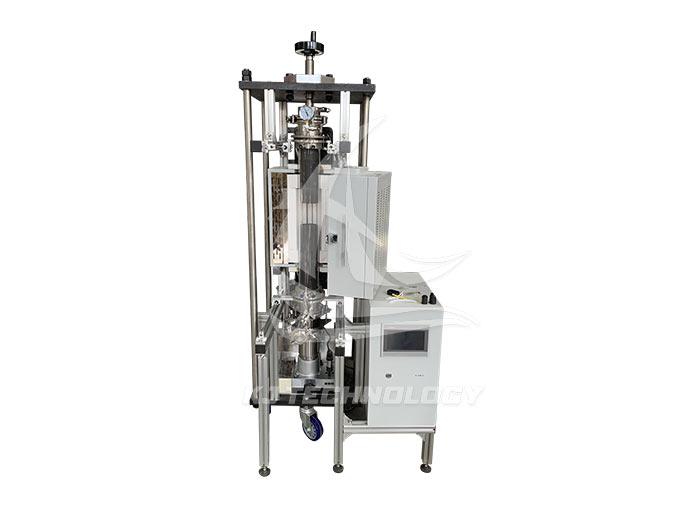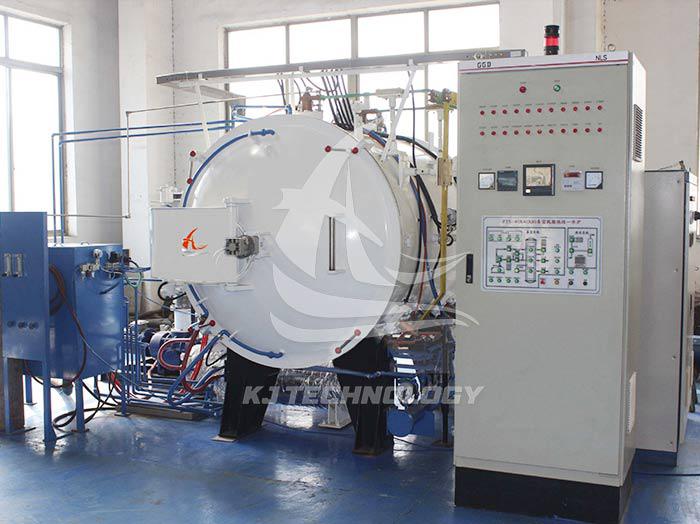Daily maintenance of vacuum degreasing furnace
 08-22-2025 Author: KJ technology
08-22-2025 Author: KJ technology
The daily maintenance of vacuum degreasing furnace is the key to ensuring stable operation of equipment, extending service life, and ensuring degreasing quality. The maintenance work should cover core components such as furnace body, vacuum system, heating system, cooling system, control system, etc., and follow the principles of regular inspection, cleaning, lubrication, and replacement of vulnerable parts. Here is a detailed daily maintenance guide:
1. Daily maintenance
Furnace body cleaning
External cleaning: Use a clean soft cloth to wipe the surface of the furnace body, remove dust, oil stains and other impurities, and avoid residual corrosive substances.
Internal cleaning: After each degreasing is completed, use a dust-free cloth or specialized tool to clean the residue inside the furnace (such as degreasing products, metal powder) to prevent contamination of subsequent workpieces or affecting the vacuum degree.
Observation window cleaning: Wipe the observation window with ethanol or specialized cleaning agent to ensure clear visibility and facilitate monitoring of the furnace's internal conditions.
Vacuum system inspection
Vacuum pump operating status: After starting the equipment, observe whether the vacuum pump (such as rotary vane pump, molecular pump) runs smoothly and whether there are any abnormal noises or vibrations.
Vacuum degree monitoring: Record the initial vacuum degree and vacuum pumping time. If the vacuum degree decreases or the pumping time is prolonged, check the system sealing or vacuum pump performance.
Vacuum pump oil level: Check whether the mechanical pump oil level is at 1/2~2/3 of the oil window, and whether the oil quality is clear (without emulsification, discoloration or impurities). If necessary, replenish or replace the oil.
Cooling system inspection
Cooling water flow rate: Confirm that the cooling water circulation is normal and the flow rate meets the equipment requirements to avoid damage to the heating element due to insufficient cooling.
Water temperature monitoring: Check if the inlet water temperature is ≤ 25 ℃. If the water temperature is too high, adjust the cooling water supply or add a heat dissipation device.
Pipeline leakage: Check the cooling water pipeline for leaks, blockages, or scaling, and repair or clean it in a timely manner.
2. Weekly maintenance
Heating system maintenance
Heating element inspection: Use an infrared thermometer or thermocouple calibration tool to check whether the surface temperature of the heating element (such as resistance wire, graphite rod) is uniform. If there is local overheating or excessive temperature deviation, adjust the power distribution or replace the element.
Thermocouple calibration: Compare the temperature displayed by the thermocouple with the reading of the standard thermometer. If the error is too large, the thermocouple needs to be recalibrated or replaced.
Insulation resistance test: Use a megohmmeter to measure the insulation resistance between the heating element and the furnace body to prevent the risk of leakage.
Deep maintenance of vacuum system
Vacuum pump maintenance:
Mechanical pump: Replace the oil (every 500 hours or depending on the oil quality), clean the oil filter, and check if the seals are aging.
Molecular pump: Check the lubrication condition of the bearings, clean the dust inside the pump body, and ensure smooth operation of the rotor.
Vacuum valve inspection: Manually operate the vacuum valve (such as the inflation valve and deflation valve) to confirm that the switch is flexible, the seal is good, and there is no air leakage.
Vacuum gauge cleaning: Wipe the surface of vacuum gauges (such as Pirani gauges and ionization gauges) with a dust-free cloth to avoid dust affecting measurement accuracy.
Pneumatic system inspection
Air source pressure: Confirm that the compressed air pressure is stable and meets the requirements for pneumatic valves, furnace door lifting, and other actions.
Lubrication of pneumatic components: Regularly add lubricating oil to pneumatic components such as cylinders and solenoid valves to reduce wear and sticking.
3. Monthly maintenance
Sealing test of furnace body
Furnace door sealing ring: Check the sealing ring (such as silicone rubber, fluororubber) for cracks, deformation, or aging, clean it with ethanol, and apply special lubricating grease (such as silicone grease) to extend its service life.
Flange connection: Check whether the flange connection between the furnace body and the vacuum pump, cooling water pipeline, etc. is tightened, and if necessary, tighten the bolts again or replace the sealing gasket.
Leakage test: Conduct a pressure holding test on the furnace body to confirm that there is no leakage.
Electrical system inspection
Power line: Check for any damage, aging, or overheating marks on the equipment's power and control lines to ensure good grounding.
Cleaning of control cabinet: Use a vacuum cleaner to clean the dust inside the control cabinet, check whether the contacts of electrical components such as relays and contactors are oxidized, and if necessary, use sandpaper to polish or replace them.
PLC/HMI calibration: Check whether the parameters displayed on the touch screen (HMI) are consistent with the actual values, backup the PLC program to prevent data loss.
Lubrication of transmission components
Furnace door guide rail: Add lubricating oil (such as lithium based grease) to the furnace door lifting guide rail to reduce friction and noise.
Workpiece frame bearing: Check whether the rotating bearing of the workpiece frame is flexible, regularly add lubricating grease to prevent jamming.
4. Quarterly/Annual Maintenance
Comprehensive maintenance and replacement
Replacement of vulnerable parts: According to the frequency of use, regularly replace vulnerable parts such as vacuum pump oil, sealing rings, thermocouples, heating elements, etc. (such as replacing mechanical pump oil every quarter and sealing rings every year).
Repair of furnace inner wall: Check the furnace inner wall (such as stainless steel, quartz) for corrosion, scratches or deformation, and polish or spray protective coating if necessary.
Waterway system cleaning: Clean the cooling water pipeline with descaling agent to remove scale and impurities, prevent blockage or corrosion.
Performance testing and calibration
Vacuum degree test: Use a standard vacuum gauge to calibrate the vacuum degree of the equipment, ensuring that the measured value is not significantly different from the actual value.
Temperature uniformity test: Multiple thermocouples are evenly arranged inside the furnace to test the temperature deviation at different positions. If it is too large, the layout or power of the heating elements need to be adjusted.
Safety function verification: Check whether the safety devices such as over temperature protection, over voltage protection, and emergency stop button are sensitive and reliable.
5. Maintenance records and archive management
Establish a maintenance ledger: Record the time, content, replaced parts, and operators of each maintenance to facilitate tracking of equipment status and fault history.
Analyze fault trends: Based on maintenance records, summarize the occurrence patterns of common equipment faults (such as vacuum pump failures and heating element damage), and develop preventive measures in advance.
Spare parts inventory management: Reserve commonly used spare parts (such as sealing rings, thermocouples, vacuum pump oil) according to maintenance plans to avoid downtime caused by missing parts.
6. Precautions
Safety first: Before maintenance, the power supply must be cut off, the gas source must be turned off, the pressure inside the furnace must be emptied, and a "Do not close" warning sign must be hung.
Professional operation: When hazardous operations involving electrical, vacuum, high temperature, etc. are involved, they must be operated or supervised by professional personnel.
Environmental requirements: The equipment should be placed in a dry, ventilated, and non corrosive gas environment to avoid moisture or dust accelerating component aging.








